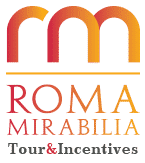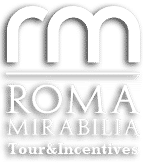If you would like to discover particularly interesting places in Rome, then book the city tour “My Rome“. On this tour we will take you to the small streets behind the famous Campo de Fiori, which all have their own story to tell. Just a few steps from the market lies the Arco degli Acetosi, an ancient archway that suddenly leads us into another world. Behind the arch, a “nativity scene” opens up, a composition of small medieval houses arranged around a small courtyard. If you were just in the bustle of a bustling city, you now have the feeling of being in the middle of a small Italian village. The name “Acetari” certainly comes from the sellers of the “acqua acetosa”, a vinegar-tasting water that was sold here in the early days. As a record on the well still proves today, this water was believed to have healing powers and therefore it was often used for kidney, spleen and liver problems.
Then we reach Via del Pellegrino in the Via dei Cappellari (Hutmacherstrasse), whose name is still reminiscent of the artisan quarter from the Middle Ages. Here the time seems to have stood still, especially since the only sound that can be heard, are the tools of the craftsmen who have their workshops here.
We leave the narrow streets and come to the magnificent Via Giulia, which invites us for a relaxing walk since only a few cars are allowed to circulate here. The Via Giulia, built by Pope Julius II as the first major Renaissance avenue, was soon to become the favorite residence of rich banker and cardinal families. Even today we see the magnificent Renaissance palaces, many of which give us a look into their backyards. At the end we can take a look in the beautiful garden of the Palazzo Farnese through a closed lattice portal and imagine what great festivals were celebrated here 500 years ago. The fountain on the opposite side of the palace, which is not without reason “Fontana del Bicchierone” (fountain of the large glass) is called because at special celebrations left the Farnese family for the citizens of the city wine instead of water from the Flow well. Too bad that this family became extinct in the 18th century!







Leave a Reply
You must be logged in to post a comment.